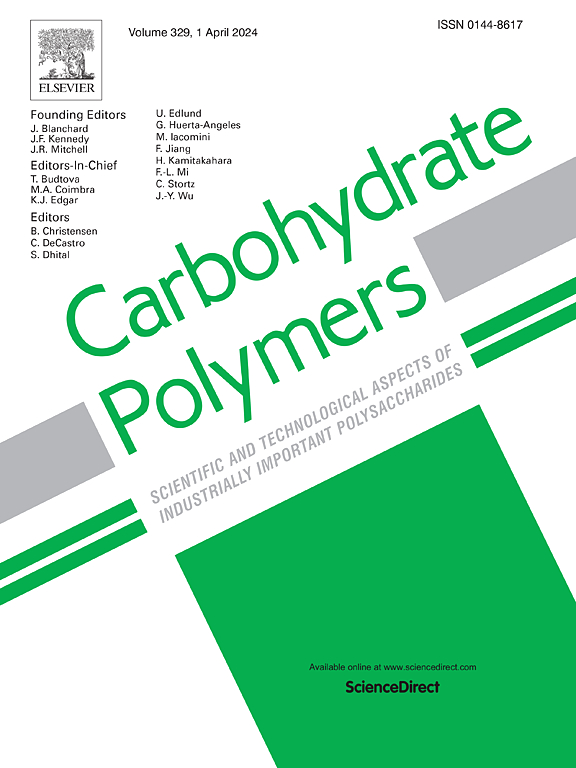β-Cyclodextrin synergistically enhanced solid encapsulation of p-anisaldehyde into V-type starch for sweet cherry preservation
IF 10.7
1区 化学
Q1 CHEMISTRY, APPLIED
引用次数: 0
Abstract
Despite the good biological and antibacterial activities, the p-anisaldehyde is easy to evaporate or degrade during processing and storage. Herein, a new V-type starch-cyclodextrin composite carrier was constructed to efficiently encapsulate p-anisaldehyde in addressing the inherent disadvantages. The introduction of β-cyclodextrin (β-CD) enhanced the short- and long-range ordered structures of the composite carrier. The V-type starch-cyclodextrin composite (VC30) exhibited the highest loading capacity of 142.01 mg/g for p-anisaldehyde, which was significantly higher than that of V-type starch (VS, 97.83 mg/g) and commercial β-CD (128.48 mg/g). The loading capacity of the V-type starch-cyclodextrin composite was positively correlated with its crystallinity and short-range order. The release rate of p-anisaldehyde was in the order of VC30 < β-CD < VS. Under non-cold chain daily storage (25 °C and 57 % relative humidity) for 2 weeks, the p-anisaldehyde of thymol released from complexes was 36 % (VC30), 49 % (β-CD), and 65 % (VS), respectively. Due to the high loading capacity and good sustained release properties, the noncontact preservation of high-value fruit by VC30 controlling p-anisaldehyde release successfully extended the shelf life of cherries from six to twelve days.

求助全文
约1分钟内获得全文
求助全文
来源期刊

Carbohydrate Polymers
化学-高分子科学
CiteScore
22.40
自引率
8.00%
发文量
1286
审稿时长
47 days
期刊介绍:
Carbohydrate Polymers stands as a prominent journal in the glycoscience field, dedicated to exploring and harnessing the potential of polysaccharides with applications spanning bioenergy, bioplastics, biomaterials, biorefining, chemistry, drug delivery, food, health, nanotechnology, packaging, paper, pharmaceuticals, medicine, oil recovery, textiles, tissue engineering, wood, and various aspects of glycoscience.
The journal emphasizes the central role of well-characterized carbohydrate polymers, highlighting their significance as the primary focus rather than a peripheral topic. Each paper must prominently feature at least one named carbohydrate polymer, evident in both citation and title, with a commitment to innovative research that advances scientific knowledge.
 求助内容:
求助内容: 应助结果提醒方式:
应助结果提醒方式:


